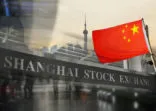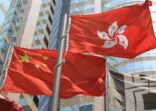On June 1, 2018, MSCI added about 230 China-listed shares to its emerging market benchmark in a two-step process.
In the run up to that day, buying of China A-shares via the Stock Connect programme began to surge, according to the Securities and Futures Commission global review report, released in January 2019.
From March to December, the total northbound net buy (stock buying in mainland China) amounted to RMB261.7bn ($38.7bn).
The figure accounts for 41% of the cumulative northbound net buy since the opening of the Stock Connect in 2014, according to the SFC.
“On the back of MSCI’s A-share inclusion, northbound net buy picked up since March 2018,” the report said.
Continuing in 2019, in January, a net total of RMB 60.69bn poured into the A-share market through northbound trading, the first time monthly net inflow topped RMB 60bn, according to a China Daily report.
Also this year, the MSCI has further plans to include A-shares in its indices, as do the FTSE Russell and S&P Dow Jones.
Funds using these indices as a benchmark must increase their allocation to A-shares in line with index inclusion, sending billions of dollars into listed Chinese companies.
North vs south
The pick-up in northbound capital flows has also helped to balance with southbound flows.
For the full calendar year 2018, the cumulative net buy for northbound was RMB 641.7bn and southbound trading (stock buying in Hong Kong via the Connect) was RMB 693.1bn, the SFC report said.
By comparison, from November 2014 to March 2017, northbound cumulative net buying was RMB 194.4bn compared to RMB 402bn for southbound.
Yet participation is still low. The average daily northbound trading is only 2.8% of trading in the mainland market. For southbound, the figure is 5.9% of trading in the Hong Kong market, according to the report.
But a recent investor survey by the Hong Kong Investment Funds Association (HKIFA) found that close to half of investors in Hong Kong and in Guangdong were interested in investing via the Connect in the next 12 months.

















